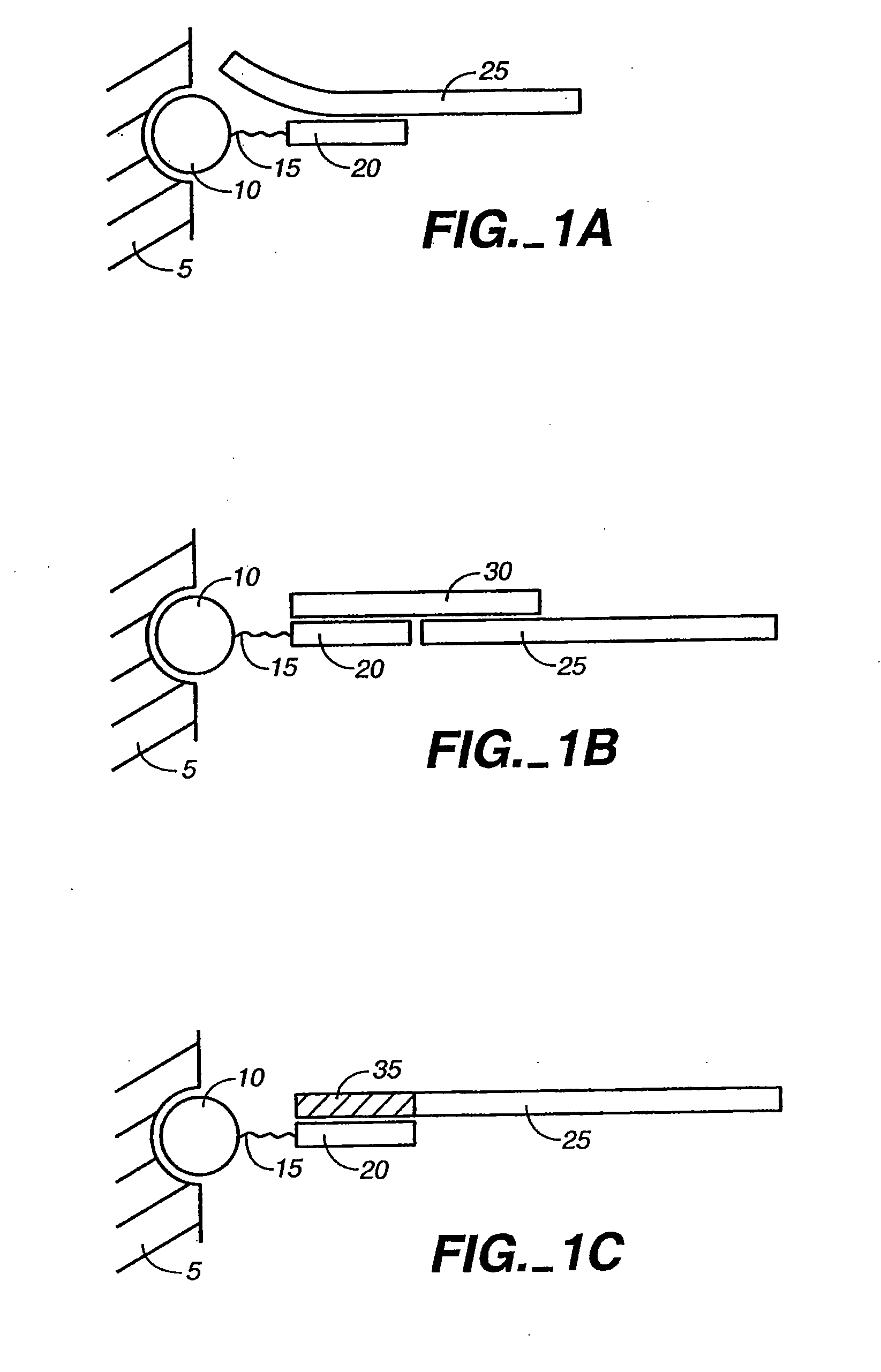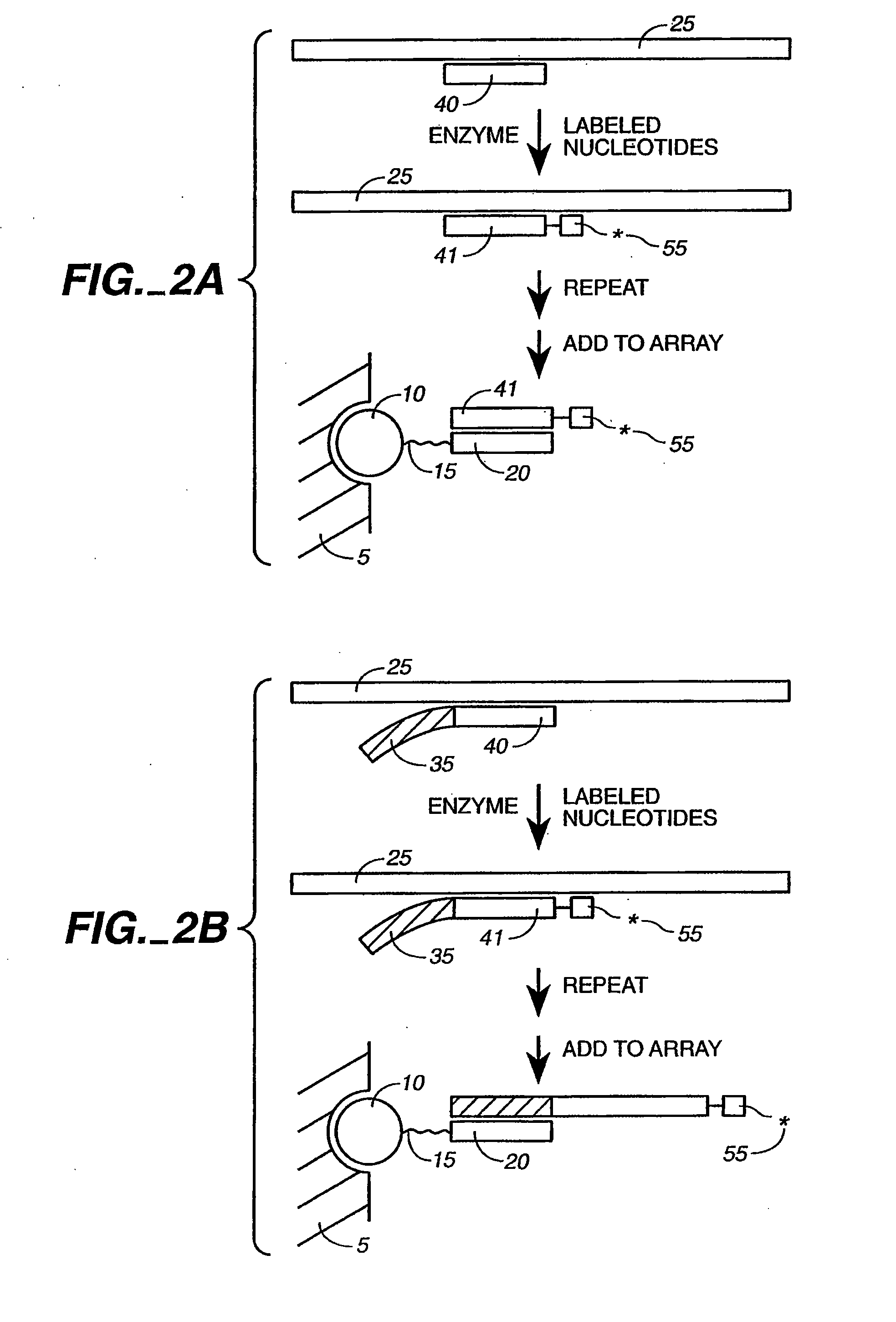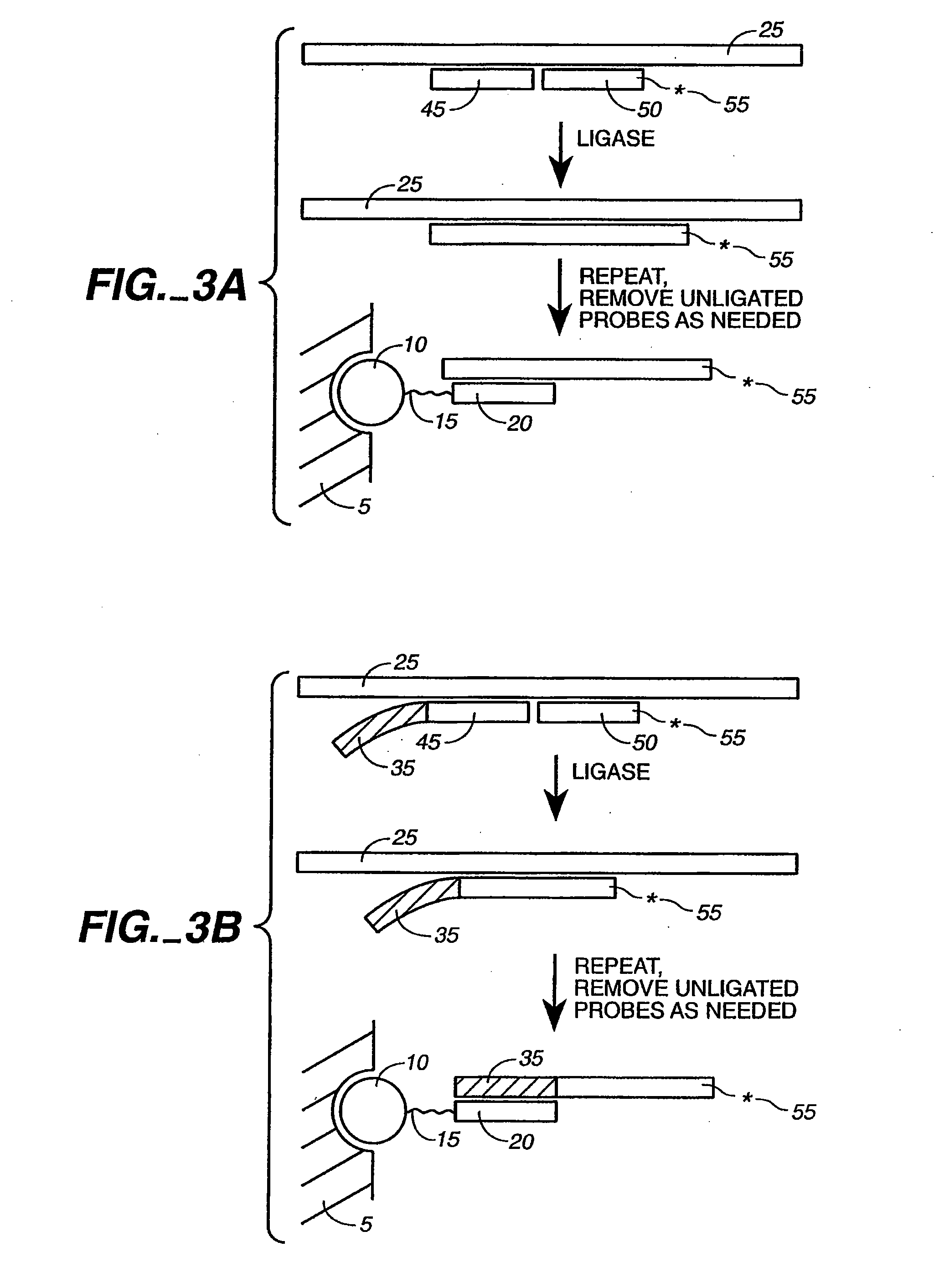Detection of nucleic acid reactions on bead arrays
a nucleic acid and array technology, applied in the field of detection of nucleic acid reactions on bead arrays, can solve the problems of significant increase in the number of target molecules, and specificity, in contrast, remains a problem
- Summary
- Abstract
- Description
- Claims
- Application Information
AI Technical Summary
Benefits of technology
Problems solved by technology
Method used
Image
Examples
Embodiment Construction
[0078]The present invention is directed to the detection and quantification of a variety of nucleic acid reactions, particularly using microsphere arrays. In particular, the invention relates to the detection of amplification, genotyping, and sequencing reactions. In addition, the invention can be utilized with adapter sequences to create universal arrays.
[0079]Accordingly, the present invention provides compositions and methods for detecting and / or quantifying the products of nucleic acid reactions, such as target nucleic acid sequences, in a sample. As will be appreciated by those in the art, the sample solution may comprise any number of things, including, but not limited to, bodily fluids (including, but not limited to, blood, urine, serum, lymph, saliva, anal and vaginal secretions, perspiration and semen, of virtually any organism, with mammalian samples being preferred and human samples being particularly preferred); environmental samples (including, but not limited to, air, ...
PUM
| Property | Measurement | Unit |
|---|---|---|
| Tm | aaaaa | aaaaa |
| temperature | aaaaa | aaaaa |
| Tm | aaaaa | aaaaa |
Abstract
Description
Claims
Application Information
 Login to View More
Login to View More - R&D
- Intellectual Property
- Life Sciences
- Materials
- Tech Scout
- Unparalleled Data Quality
- Higher Quality Content
- 60% Fewer Hallucinations
Browse by: Latest US Patents, China's latest patents, Technical Efficacy Thesaurus, Application Domain, Technology Topic, Popular Technical Reports.
© 2025 PatSnap. All rights reserved.Legal|Privacy policy|Modern Slavery Act Transparency Statement|Sitemap|About US| Contact US: help@patsnap.com



